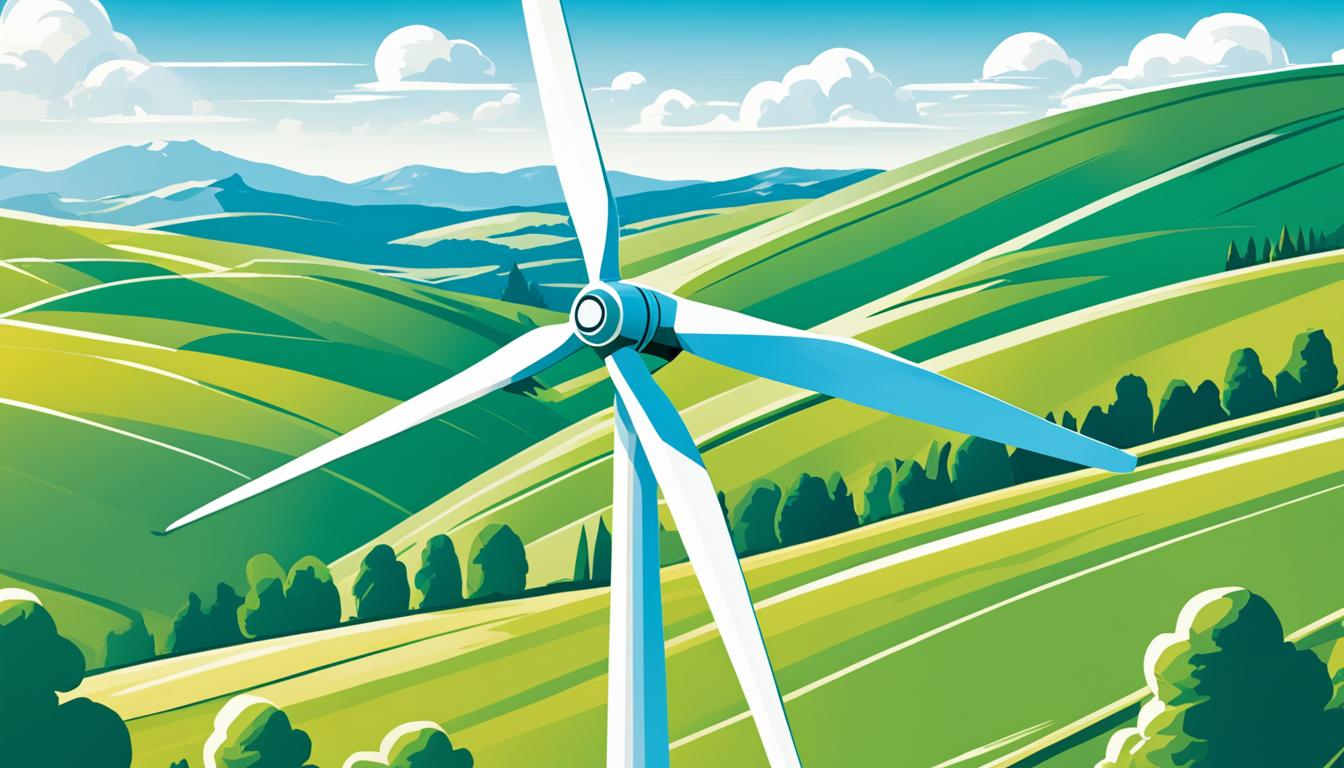As we shift towards a cleaner energy future, we're turning to geothermal energy to generate electricity sustainably. This reliable, renewable power source can notably reduce our dependence on fossil fuels. We're leveraging techniques like dry steam, flash steam, and binary cycle power plants to convert heat into electricity efficiently. With geothermal reservoirs often found in volcanic or tectonic areas, we're using exploration techniques like seismic surveys and geochemical analysis to tap into this potential. Let's explore how geothermal energy can help us achieve a cleaner, more sustainable tomorrow.
Key Takeaways
- Geothermal energy is a reliable and sustainable source of electricity, offering a low-carbon alternative to fossil fuels.
- Various techniques, including dry steam, flash steam, and binary cycle methods, convert geothermal heat into electricity efficiently.
- Geothermal power plants can achieve conversion efficiencies of 10-23%, depending on temperature gradient and fluid flow rate.
- Geothermal energy provides minimal land use, reduced air pollution, and consistent power output with minimal environmental impact.
- The global potential for geothermal energy is significant, offering a promising solution to achieve climate goals and sustainability.
Geothermal Energy Extraction Techniques

We harness geothermal energy by extracting hot water and steam from deep within the Earth's crust, utilizing techniques like dry steam, flash steam, and binary cycle power plants to convert this heat into electricity.
The dry steam method involves directing steam directly into turbines to generate power. Flash steam plants, on the other hand, use high-pressure fluid to produce steam, which then drives turbines. Binary cycle power plants pass hot geothermal fluid through a heat exchanger to drive a turbine.
These techniques allow us to efficiently extract heat from geothermal reservoirs, making geothermal energy a reliable and sustainable source of electricity. By leveraging these methods, we can tap into the Earth's natural heat to power our homes and businesses.
Reservoir Formation and Location

As we explore the world of geothermal energy, it's crucial to understand how geothermal reservoirs form and where they're located. Geothermal reservoirs form through the accumulation of hot water and steam beneath the Earth's surface, often in areas with significant volcanic or tectonic activity.
To identify potential reservoirs, we utilize geothermal exploration techniques such as:
- Geological studies to evaluate the region's thermal and structural properties
- Drilling to gather data on temperature, pressure, and fluid flow rates
- Seismic surveys to map subsurface structures and pinpoint potential reservoirs
- Geochemical analysis to determine the chemical composition of the geothermal fluids
Power Plant Operation and Efficiency

Geothermal power plants efficiently harness the Earth's natural warmth to generate electricity, operating continuously to provide a stable source of power.
We've found that these plants can achieve conversion efficiencies of around 10-23%, depending on factors like temperature gradient and geothermal fluid flow rate. Higher temperatures in geothermal reservoirs lead to higher conversion efficiencies, making them ideal locations for power generation.
By understanding these factors, we can optimize power plant operation to maximize energy extraction. Our goal is to harness the Earth's natural warmth to meet electricity needs sustainably, and geothermal power plants are a crucial step towards achieving that goal.
With continuous operation and efficient energy extraction, geothermal power plants play a vital role in our progression to renewable energy sources.
Environmental Benefits and Advantages

Our reliance on geothermal energy reduces greenhouse gas emissions, producing a cleaner and healthier environment. By harnessing the Earth's natural heat, we can decrease our carbon footprint. Here are just a few of the key advantages:
- Renewable and sustainable: Geothermal energy is a renewable resource, available 24/7, providing consistent power output.
- Minimal land use: Geothermal power plants have a small land footprint, reducing environmental impact.
- Air pollution reduction: Geothermal energy production minimizes air pollution, contributing to a cleaner environment.
- Climate change mitigation: By reducing greenhouse gas emissions, geothermal energy helps mitigate climate change.
These benefits make geothermal energy an attractive option for sustainable electricity generation, supporting our shift to renewable energy sources.
Global Potential and Economic Viability

With an estimated global potential to provide baseload power and complement other renewable sources, we're poised to tap into this clean energy resource on a massive scale. Countries like the U.S., Philippines, Indonesia, and Iceland are leading the way, harnessing their significant geothermal reserves to generate electricity.
The economic viability of geothermal energy is also promising, with low operational costs and increasing market opportunities. While finding suitable geological conditions and locations for geothermal reservoirs can be a challenge, the rewards are well worth it.
As we shift to renewable energy sources, geothermal energy is set to play a significant role in achieving climate goals and sustainability. We're excited to explore this potential further and reveal the full benefits of geothermal energy.
Sustainable Electricity Generation Methods

As we delve into the world of sustainable electricity generation, we're exploring methods that not only reduce our carbon footprint but also guarantee a reliable supply of power for generations to come. Geothermal energy stands out as a beacon of hope in this quest.
Here are some sustainable electricity generation methods that harness the power of geothermal energy:
- Dry Steam Method: This method uses steam directly from the reservoir to power turbines, producing electricity with minimal environmental impact.
- Flash Steam Method: High-pressure hot water from the reservoir is flashed to produce steam, which then drives the turbine.
- Binary Cycle Power Plants: These plants use the heat from the geothermal fluid to produce steam, which then powers the turbine.
- Enhanced Geothermal Systems (EGS): This method involves creating artificial reservoirs to tap into hot rock formations, increasing the potential for geothermal energy production.
Geothermal Energy Applications and Uses

Beyond electricity generation, geothermal energy has a wide range of applications and uses that can greatly impact our daily lives and the environment. We can utilize geothermal energy for space heating, cooling, and hot water supply in buildings, reducing our reliance on fossil fuels.
It can also be used in agriculture for greenhouse heating, soil warming, and crop drying. In addition, geothermal energy can provide heat for industrial processes, such as food processing, textile manufacturing, and paper production.
Moreover, it can be used for aquaculture, helping to raise fish and other aquatic species. By diversifying our use of geothermal energy, we can maximize its benefits and move closer to a more sustainable future.
Frequently Asked Questions
Can Geothermal Energy Be Used for Heating and Cooling Buildings?
Yes, we can definitely use geothermal energy for heating and cooling buildings. We can tap into the Earth's natural heat to provide warmth in winter and cooling in summer, reducing our reliance on fossil fuels.
How Does Geothermal Energy Compare to Other Renewable Energy Sources?
"Let's be real, folks, we're not exactly spoiled for choice when it comes to renewable energy sources. But, geothermal energy stands out from the crowd, offering a unique combo of reliability, low emissions, and minimal land use, making it a top contender among renewables."
Are Geothermal Power Plants Conducive to Community Development?
We believe geothermal power plants can contribute to community development by providing jobs, stimulating local economies, and supplying reliable electricity, ultimately enhancing the overall quality of life for nearby residents.
Can Geothermal Energy Be Stored for Later Use?
"What if we could bottle the Earth's heat? While we can't store geothermal energy itself, we can store the generated electricity through batteries or other innovative solutions, ensuring a steady supply when needed."
Are There Any Risks Associated With Geothermal Energy Exploration?
We acknowledge that geothermal energy exploration carries risks like induced seismicity, land subsidence, and potential contamination of groundwater, which need to be carefully managed to guarantee safe and sustainable operations.
What Are the Key Components Needed to Generate Electricity from Geothermal Energy?
The essential geothermal power machinery needed to generate electricity from geothermal energy includes geothermal wells, which tap into hot water and steam beneath the Earth’s surface, a power plant to convert the geothermal energy into electricity, and a transmission system to deliver the electricity to consumers.
Conclusion
As we stand at the threshold of a sustainable energy revolution, we're poised to reveal the Earth's hidden treasures.
Geothermal energy is the key that can uncover a future powered by clean, reliable, and renewable electricity.
Like a phoenix rising from the ashes, geothermal energy can transform our reliance on fossil fuels, illuminating a path towards a brighter, carbon-neutral tomorrow.









